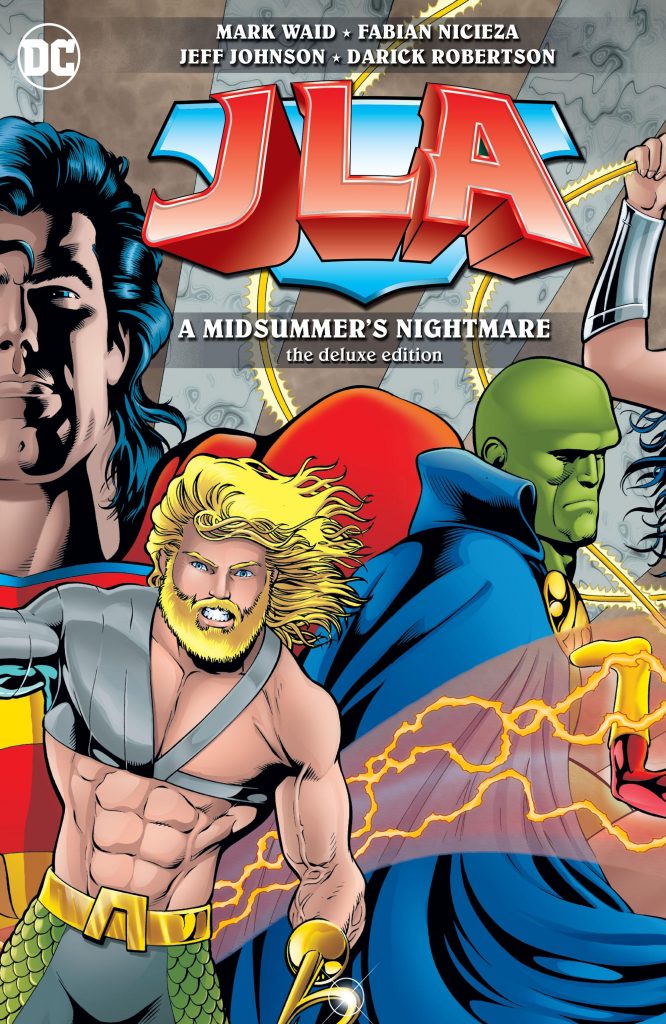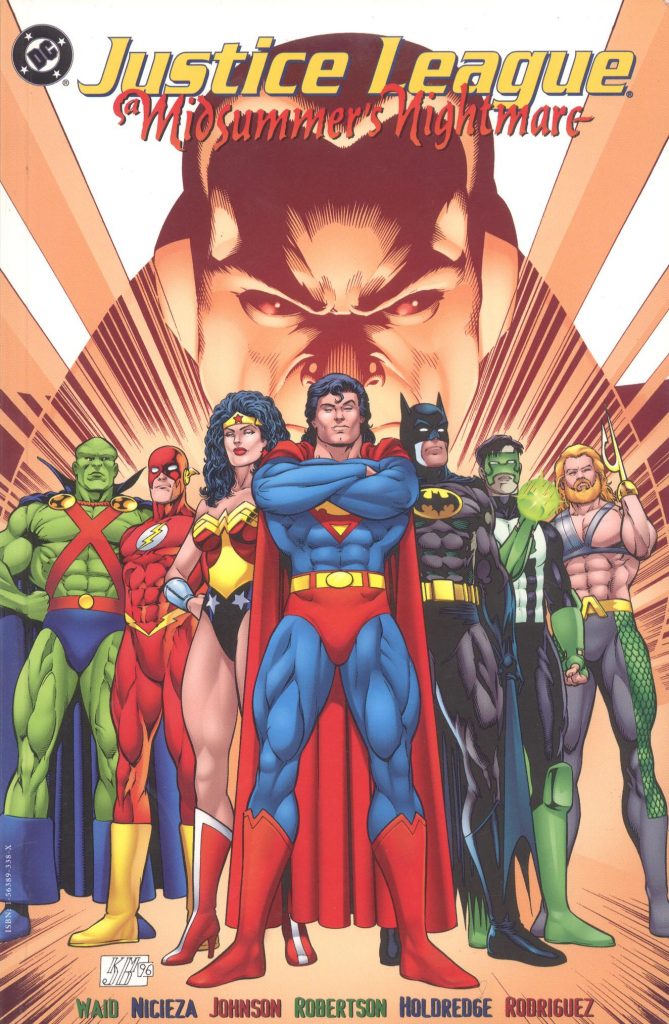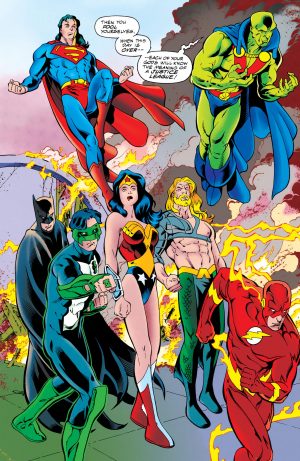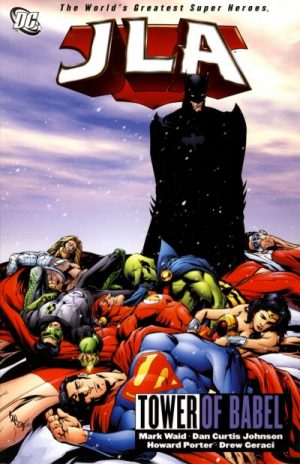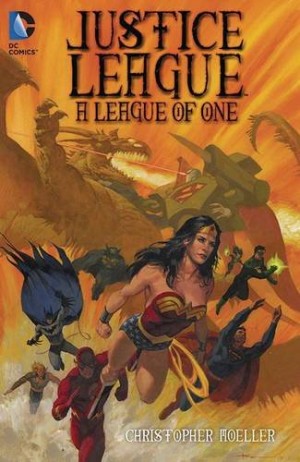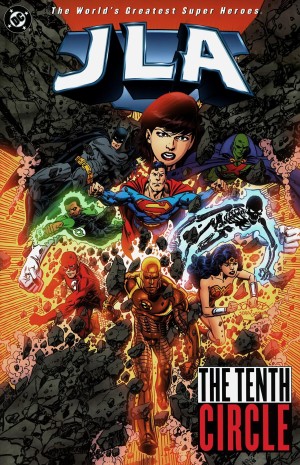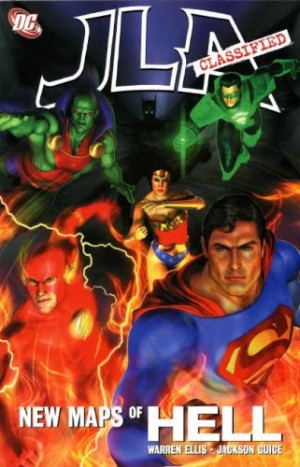Review by Karl Verhoven
There’s a clever lead in to A Midsummer’s Nightmare as the veil is drawn back not once, but twice. We first see some frankly mundane comic panels, then pull back to see they’re what Kyle Rayner is creating in the course of his career as a comic artist. Mark Waid and Fabian Nicieza manage a few barbs at the idea of artists not needing writers to produce comics, a contentious topic in the 1990s, before revealing that Rayner isn’t Green Lantern. In fact he’s one of the reducing number of people on Earth lacking any super powers. The remainder of the Justice League are faring no better, ignorant of what we know to be their true personalities. Inevitably some Justice League members realise the world has been altered and the question then becomes who’s managed to do this, and why do they want the Justice League out of the way.
Despite Grant Morrison’s effusive introduction, A Midsummer’s Nightmare is an interesting conundrum almost stillborn due to an extraordinary leisurely build-up. As noted, the opening pages are clever and do their job of intriguing, but the spotlight then circles at length around the other six primary members of the Justice League, and the interludes involving each as civilians are dull, with the exception of Batman, for whom there’s a neat surprise. For writers who’ve had no track record with Batman solo material before or since, they handle his dark persona well. When asked what should be done if his colleagues prefer their new lives to their old being restored he grimly replies “Then we hit them in the face with an ice cold slap.”
Once we reach the second chapter matters improve. The pacing picks up, and the Justice League realise they have a larger task ahead of them than assumed. There’s also a great infusion of interesting little moments, such as where the Martian Manhunter is found, the use of Wonder Woman’s lasso, and particularly toward the end where the purpose of superheroes adopting human identities is questioned. This, however, is in overwrought fashion, and the thrill of an ending reaffirming that the heroes are better bound together rather than acting individually has been swept away by time. In 1996 it led into Grant Morrison’s rebooted JLA series featuring these core Justice League members reunited for the first time in well over a decade.
The other aspect dragging this down is the art. At the time Jeff Johnson and Darick Robertson were two relative newcomers, enthusiastic, but still with a lot to learn about laying out a story for the best presentation. Surely neither of them now looks back on this as their definitive superhero contribution.
DC have some faith in A Midsummer Nightmare, reissuing it in 2017 in what they refer to as a ‘deluxe edition’. In practice this amounts to whiter paper than the 1996 publication and hardcovers. It’s not worth it.
